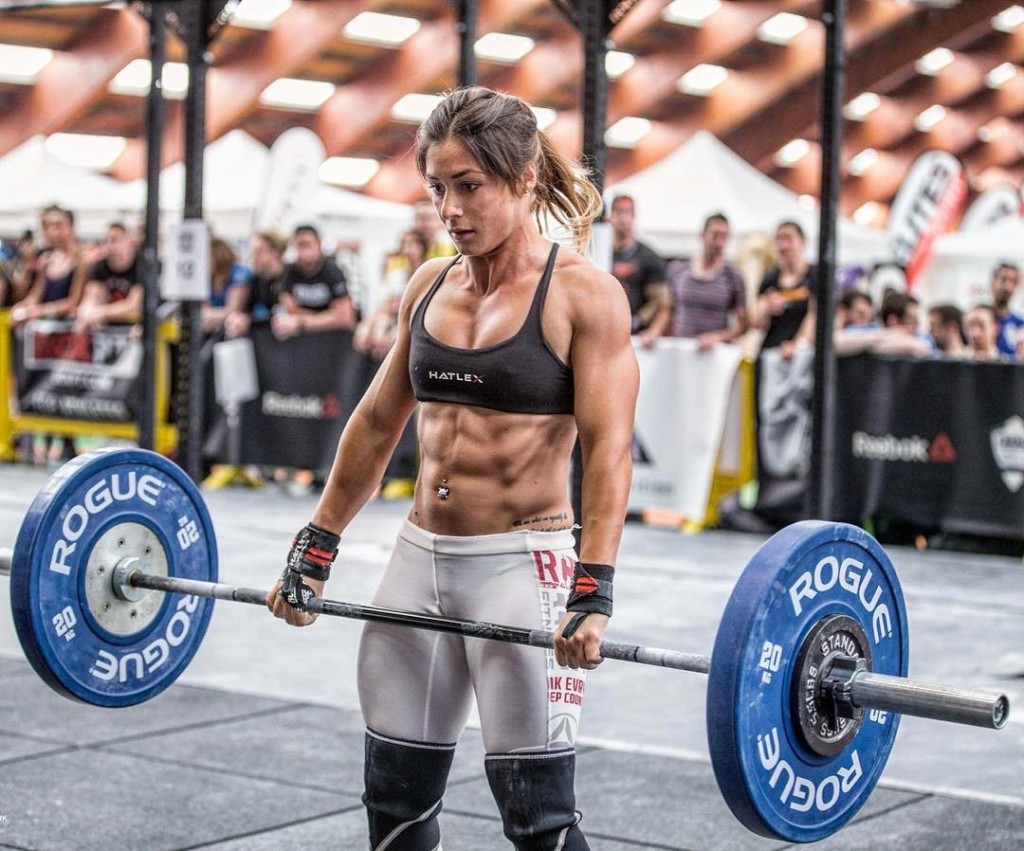 Any program will work if it’s not idiotic, but you have to get the basics right. So before thinking about which new exercise to try, make sure your foundation is solid. Knowing how far to push yourself on failure, volume, frequency, and load will determine how effective your training will be. Get one of these wrong and your gains will come to a halt.
Any program will work if it’s not idiotic, but you have to get the basics right. So before thinking about which new exercise to try, make sure your foundation is solid. Knowing how far to push yourself on failure, volume, frequency, and load will determine how effective your training will be. Get one of these wrong and your gains will come to a halt.
1 – Failure: Use It Conservatively
Taking your reps to failure is useful under the right circumstances and in the right doses. And it’s not the only stimulus for growth, maybe not even the best one. Granted, there’s been some research showing that the weight used isn’t as important as going to failure when it comes to hypertrophy.
One experiment even showed that a load of 30% of a lifter’s max (light weight) led to similar hypertrophy as a load of 80% (much heavier). This would indicate that failure is required in stimulating growth. But nothing is ever that simple. You can’t ignore all the bodybuilders who’ve built a lot of muscle without going to failure.
So is hitting failure really the stimulus for growth? Or is it only the outcome of pushing what’s needed for growth to the extreme?
Here’s why it seems like training to failure will work: When you reach failure you have exhausted the muscle fibers so much that they can no longer produce enough force to overcome the resistance. But failure isn’t always due to fatigue of the muscle fibers.
Muscle failure can be due to energy depletion (either the phosphagens or glycogen in the muscle), and mitochondrial failure can also occur with very high reps. And a common cause of muscle failure is the acidification in the muscle. Lactic acid and hydrogen ions accumulate as the result of mechanical work. These interfere with the contraction of the muscle fibers. If it interferes enough, you hit failure.
When doing sets for 40-60 seconds (12-20 reps) that’s likely what causes failure. On top of that, fast twitch dominant individuals hit that point much sooner because they produce more lactic acid. So a person with more fast twitch muscle might hit failure due to acidity or contractile interference during sets as short as 25-30 seconds.
So hitting failure doesn’t necessarily mean that you fatigued the fibers as much as you could. Furthermore, in many exercises hitting failure doesn’t mean that the target muscle even failed. It’s more likely due to other factors: the muscles involved can’t generate enough force; proper lifting posture and mechanics can’t be maintained decreasing efficiency; or even CNS fatigue.
Bottom Line: Going to failure can be useful with certain types of training and in some individuals, but it’s certainly not to be used universally on all exercises.
Sure, you can go to failure to recruit more muscle fibers without having to use heavy weights. The nervous system pretty much always recruits the slow twitch fibers first. If the weight is too heavy for the strength of these fibers alone, it will bring the intermediate fibers into play. And if it’s even heavier, the fast twitch fibers will be added to the mix.

Failure or Not, Get Maximal Muscle Fiber Recruitment
The average person needs to lift around 80-85% of his or her maximum. People who are very fast twitch dominant, or neurally efficient, might be able to do so with as little as 65-70%. Of course, this is for normal reps.
If you’re lifting explosively, you can recruit the fast twitch fibers even when under a light load. The other way to recruit fast twitch fibers is to use muscle fatigue to make the weight heavy. In a normal set you lose 1 to 4% of your strength per rep. The longer the set lasts, the more decrement there is from rep to rep.
For example, in a set of 20 reps you have a much larger strength drop from rep 19 to 20 than between reps 1 and 2. That’s because in the latter reps more fast twitch fibers are recruited and fatigue faster. There’s also a greater accumulation of lactic acid.
And after several reps with 60% of your max you can recruit as many fibers as you would if you were using a weight of 80% because as you fatigue the weight becomes heavier relative to your current strength potential. During a set of 15 reps at 60% here’s what each rep “feels” like:
Parameters set at 60% of 1RM
- Rep 1: Feels like 60%
- Rep 2: Feels like 62%
- Rep 3: Feels like 63%
- Rep 4: Feels like 64%
- Rep 5: Feels like 65%
- Rep 6: Feels like 66%
- Rep 7: Feels like 67%
- Rep 8: Feels like 68%
- Rep 9: Feels like 70%
- Rep 10: Feels like 72%
- Rep 11: Feels like 74%
- Rep 12: Feels like 76%
- Rep 13: Feels like 78%
- Rep 14: Feels like 80%
- Rep 15: Feels like 83%
Remember, maximum voluntary fiber recruitment occurs at 80-85%. So by rep 14 the accumulated fatigue makes 60% feel like 80%. By rep 13 or 14, because of the accumulation of fatigue, you’re recruiting all the fibers you can recruit. What would happen if we continued the 15 reps set with 60% until we hit failure? Here’s what extending the set would feel like:
- Rep 15: Feels like 83%
- Rep 16: Feels like 85%
- Rep 17: Feels like 88%
- Rep 18: Feels like 91%
- Rep 19: Feels like 95%
- Rep 20: Feels like 100%
Failure would likely happen at rep 20. The first 13 reps, up to what feels like 78%, is where you prepare the body for the “money” reps and build up the fatigue that’ll force your body to recruit higher threshold muscle fibers. Reps 14 to 18 are the money reps where you have full recruitment and can fatigue/stimulate the muscle fibers most prone to growth.
The final few reps are the danger zone, where you’re likely to hit failure. They place a much bigger burden on the nervous system and dramatically impair your capacity to do more work. Think of each set where you reach that point the same way as you’d think of a set where you lift your 1RM.
This is important to understand: Going to failure has the same neurological impact as going for a 1RM because you hit failure when the relative weight of the resistance is slightly higher than your strength potential at the moment. In other words, the rep you hit failure on is the rep where you couldn’t lift the weight despite a maximal effort.
Training to failure when building muscle is like a powerlifter always doing max lifts in training. Neurologically it has the same impact because that last rep is a maximum effort: it can be very effective, but you’ll burn out fast. Going to failure is only an insurance policy. It helps you make sure that you recruited as many fibers as possible. The thing with an insurance policy is that it costs you. The cost is neural fatigue and eventually hormonal fatigue.
If you’re going to do it, know what exercises are okay for going to failure. Only do it with ones that have a low neurological demand – isolation exercises and machines mostly. Avoid hitting failure on compound exercises.
2 – Load: Choose The Right Weight

Ronnie Coleman once said that the way to build muscle fast is to get a pump with heavy weights. That might sound simplistic, but it tells you a lot about weight selection in training.
Bottom line? You need to use weights that are heavy enough for you, but that will still cause the muscle tension required to create a pump. And there are two ways that lifters mess this up:
1 – Going too heavy
This won’t give you a solid pump. There’s a point where if you add more weight you can still do the work, but you won’t actually feel the target muscles doing the work. And the tension gets shifted and spread out to other muscles and even tendons.
Lifting maximal or near maximal weights that don’t create a pump and during which you don’t feel the target muscle being loaded can be used as a way to increase strength and muscle hardness. But it can’t be your main approach to training when your primary goal is building muscle.
2 – Going too light
This won’t lead to maximal growth if used as the main training method. Using a very light weight can allow you to do the reps with constant tension: going slow and flexing the muscle hard. You can also do high reps, drop sets, and supersets and get a huge pump. But the weight isn’t heavy enough to create maximal tension.
Using light weights to get a skin-splitting pump can assist in stimulating muscle growth by increasing nutrient uptake by the muscles and by the activation of mTor. But it can’t be your main way of training when trying to build maximum muscle.
Try to find someone who built an impressive amount of muscle by only doing light pump work. They exist, but they’re often older and have a history of training heavy early on. When you already have a lot of muscle, you don’t need as much heavy lifting to continue improving your physique. But don’t look at what the big guys are doing now, look at what they’ve been doing all their lives to get where they are.
Challenge yourself without losing the feeling of a crisp muscle contraction. This is the key to building size. To challenge yourself, do anywhere between 4 and 8 tough reps per set, with a focus on 6-8. This will be heavy enough to load the muscles properly, but not so heavy that tension shifts away from the target muscle. It’ll also give you enough mechanical work to create the fiber fatigue that leads to growth.
 Sarcoplasmic Hypertrophy and Temporary Gains
Sarcoplasmic Hypertrophy and Temporary Gains
When researchers studied lifters going to failure, they found similar gains between those using 30% of their max and 80%. However, that same study found that those training with 80% had roughly twice the STRENGTH gains as those using 30%.
This should tell you one of two things: Either the lighter weights stimulated more sarcoplasmic hypertrophy (increase in cell volume without making the actual fibers bigger) OR the neural factors weren’t trained as much. In either case, it’s a big drawback.
Sarcoplasmic hypertrophy can be lost more easily than hypertrophy of the actual muscle fibers. So while you can increase it to “top off” your gains, the bulk of your training should be aimed at increasing fiber size, which makes your muscles bigger AND stronger.
Neural efficiency is important too. The more efficient you are at recruiting your muscle fibers, the less fatigue your body requires in order to build a maximum amount of fibers. The sooner you can recruit fast twitch fibers in the set, the farther away you can stay from failure, and the easier you’ll recover, allowing for either more volume or frequency.
3 – Volume: Know How Many Sets To Do

For hypertrophy, using sets of 4-8 reps per set and doing 2-3 hard work sets is best. And if you’re ramping up it could be 2 slightly lighter preparation sets and then 2-3 challenging work sets. Four work sets can work very well too.
As far as weekly volume per muscle group is concerned, Brad Shoenfeld has presented data showing that doing 10 sets or more per muscle group a week leads to more muscle growth (+9.8%) than doing 5-9 sets per week (+6.6%) or less than 5 (+5.4%).
A safe assumption is that for maximum hypertrophy 10-15 sets per muscle per week is optimal. This would mean doing 4 or 5 exercises per muscle group for 2-3 work sets. More than that could end up being detrimental to gains.
The weekly volume can be spread over 1, 2, or 3 weekly sessions. You can either disperse the volume equally, or do more volume for a muscle one day and less another.
Volume per session is also dependent on glycogen status. When building muscle is a priority we want to avoid glycogen depletion because it triggers catabolic actions that hurt muscle growth. So if carb intake is low, the volume per session has to be lowered. On the other hand, using a workout drink containing the right carbs will increase the volume you can tolerate in a session.
The Point of Diminishing Returns
Yes, volume is important when you want muscle growth. Doing 10 sets per muscle per week will give you almost twice as much growth as doing 5 total sets or fewer per week. But don’t overdo it. Going too high in volume will fail to stimulate more gains, unless you’re taking steroids.
4 – Frequency: Know How Often to Train

Frequency is king. It’s true for hypertrophy and even more true for strength. Researchers have concluded that training a muscle at a higher frequency is superior than a lower frequency. Hit each muscle a minimum of twice per week for maximum growth.
Keep in mind that some muscles can be significantly hit even when they’re not the main focus of an exercise. The pecs will get trained by the close-grip bench press even if it primarily hits the triceps. So this doesn’t mean that all muscles should be trained three times a week, but that they should at least be stimulated to some degree two or three days a week for maximum growth. Here’s a sample:
- Monday: Pecs, upper back
- Tuesday: Lower body, quad dominant
- Wednesday: Off
- Thursday: Shoulders, biceps, triceps
- Friday: Off
- Saturday: Back, lower body (posterior chain dominant)
- Sunday: Off
With this split every muscle gets hit twice per week and the biceps get hit three times when you count the secondary stimulation they get on back days.
Weekly Training
Look at the training frequency of elite lifters and athletes. Most train 4 or 5 days a week, with the exception of Olympic lifters whose sport requires more frequent skill practice. If these people – who have superior genetics and are in their prime – find that they’re progressing optimally from 4-5 training days per week, what gives us the impression we can handle more?
Training 5 days per week or more is best used temporarily as an overreaching phase a couple weeks before a vacation, or for those with a non-stressful life. But someone who’s under a lot of psychological stress or someone working a physical job should stick to 4 training days per week.
An intelligent training split can get you hitting every muscle group to some extent twice a week with just four weekly sessions. It would be possible to do so in three weekly sessions, but the daily workload might be too high, leading to a lower quality of work toward the end of the workouts.
Rest Days
They’re important to maximize muscle growth, optimization of the glycogen stores, and neural recovery: all necessary for optimal workout performance which is necessary for muscle growth. A healthy immune and hormonal system requires rest days. The rest days and training schedule I recommend is:
- 2 days on
- 1 off
- 1 on
- 1 off
- 1 on
- 1 off
- Repeat
Article Source: http://www.t-nation.com/training/how-to-train-for-non-stop-muscle-growth
